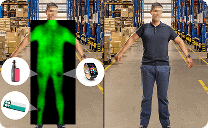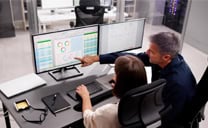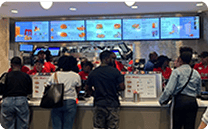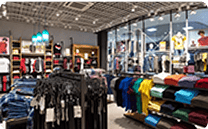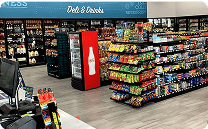In This article
Remote monitoring refers to the use of internet-connected systems and platforms that enable users to supervise security, operations, and performance from a different location. In business environments, especially those with multiple locations or limited on-site oversight, remote monitoring plays a vital role in maintaining control, visibility, and accountability.
By using surveillance systems, sensors, and software platforms that support remote access, businesses can monitor critical activities, such as employee behavior, customer flow, after-hours access, and incident alerts, from anywhere using a desktop dashboard or mobile app.
How Remote Monitoring Works
Remote monitoring systems typically include:
- IP Cameras and Cloud-Connected DVRs/NVRs: These devices capture and store video while enabling secure, real-time access over the Internet.
- Web-Based Dashboards and Mobile Apps: Interfaces that allow managers to view live feeds, play back recordings, and manage alerts from any device.
- Data and Alert Integration: The ability to receive push notifications or automated alerts when motion is detected, an alarm is triggered, or a rule is broken.
- User Access Management: Role-based permissions that restrict or allow monitoring access by user type, department, or location.
Cloud infrastructure or centralized monitoring platforms often support these systems that aggregate data and video from multiple sites into one unified interface.
Why Remote Monitoring Matters
For businesses of all sizes—especially those operating across multiple locations or with lean management teams—it offers key advantages:
- 24/7 visibility into store operations, employee conduct, and customer activity
- Faster incident response, allowing managers to take action immediately when issues arise
- Improved loss prevention, with the ability to detect and verify suspicious behavior in real time
- Operational consistency, with remote verification of store openings, closings, and protocol adherence
- Time and cost savings, reducing the need for on-site check-ins or in-person investigations
In retail, food service, healthcare, and logistics, it helps businesses maintain performance standards, uphold safety protocols, and address customer concerns, even when leadership cannot be physically present.
Key Use Cases for Remote Monitoring
Remote monitoring can be applied to a wide range of business functions, including:
- Security Oversight: Verifying alarms, monitoring late-night access, or confirming that entrances are appropriately secured.
- Operational Auditing: Ensuring employees are following procedures such as cleanliness checks, safe food handling, or opening/closing routines.
- Customer Service Monitoring: Reviewing how staff interact with customers to identify training opportunities or service breakdowns.
- Vendor and Delivery Verification: Confirming third-party vendors or shipments arrive as scheduled and goods are received correctly.
Many businesses also use remote monitoring to supplement their case management or incident documentation processes, making it easier to investigate and resolve issues immediately.
Considerations for Remote Monitoring
To help ensure security and performance, the RM platform must:
- Be password-protected and encrypted to avoid unauthorized access
- Offer audit logs for activity tracking
- Work reliably on both desktop and mobile environments
- Provide intuitive interfaces for reviewing footage and managing alerts
- Allow flexible user permissions to control who sees what, and when
Proper setup, regular user training, and secure connectivity are essential to maximizing the value of remote monitoring capabilities.
DTiQ Remote Monitoring
DTiQ’s 360iQ platform offers remote monitoring that gives you eyes on every location, no matter where you are. With cloud-based video access, real-time alerts, and performance oversight tools, DTiQ helps ensure your stores stay secure, compliant, and on track. Whether you’re managing one site or one hundred, DTiQ puts actionable visibility in the palm of your hand.
